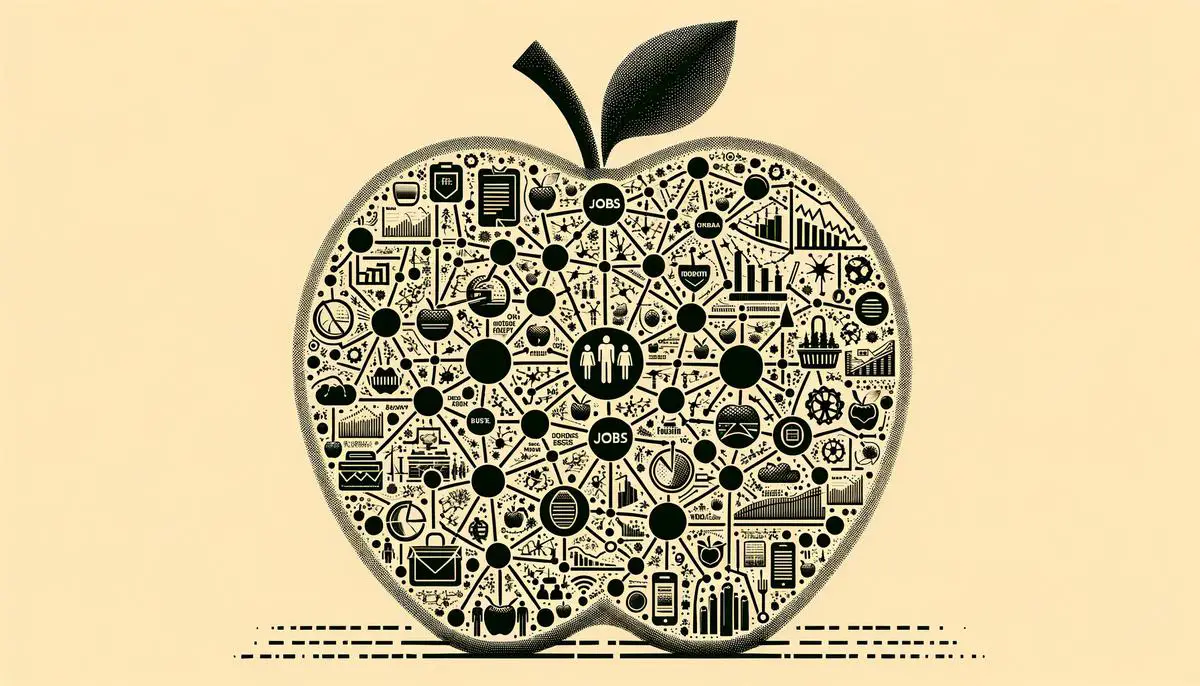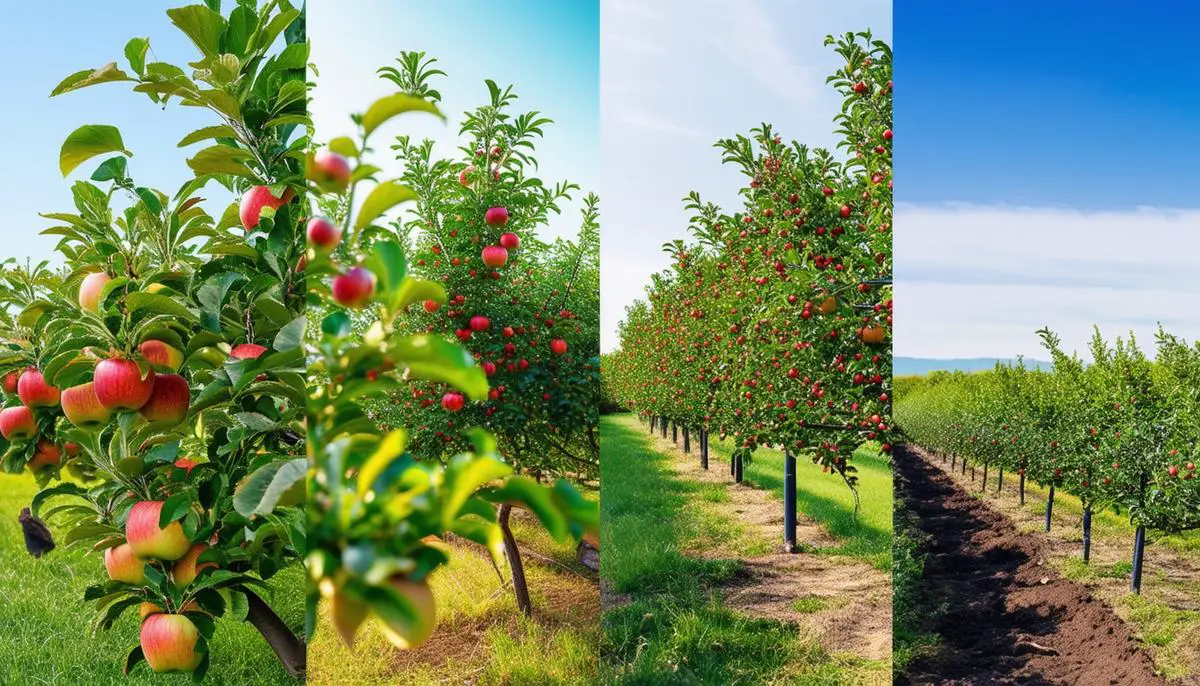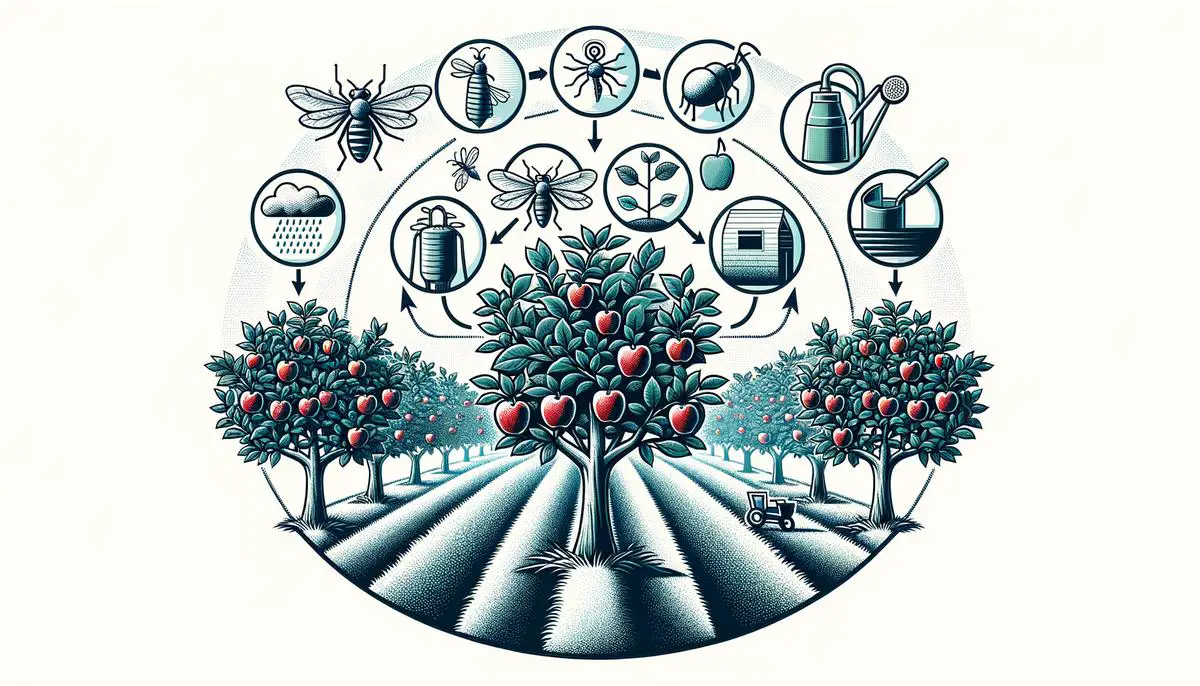Apple farming is more than just planting trees and waiting for fruit. It's a complex balance of economic impact, climate adaptation, and innovative management practices. From the orchards of New York to Tasmania, each farm tells a story of resilience and careful attention to detail.
Economic Impact Analysis of Apple Farming
The Cornell team's research on New York's apple industry revealed its hidden economic muscle. Using locally sourced data rather than national averages, they found the total economic impact was $574 million – a 21% increase from traditional models. This isn't just a rounding error; it's a testament to the importance of accurate data.
For every apple industry job, nearly half another job springs into existence. Apples grew $2 billion in industry output and nearly 12,000 jobs. It's like watching seeds sprout into a whole orchard.
The study breaks down the layers. With locally sourced data from Cornell partner Lake Ontario Fruit Team, accuracy doubled. Their inquiries covered specifics—right down to whether a farmer buys fertilizer from the neighbor or off some nationwide chain's rack.
Farmers spending locally isn't quaint; it's economic rocket fuel.
The baseline shifts, showing that real-world farming isn't confined to theoretical profits. It's a living, breathing slice of the economy, with countless tiny mechanisms interlocking.
Jumping continents, Apple and Pear IPDM projects track the influence of integrated pest management. For instance, the impact in Tasmania's Geeveston, where John Evans runs a 40ha orchard. Evans's orchard, tightly spaced for efficiency, showcases how innovation grows profit margins.
In Batlow, NSW, Michael and Jeremy Smart's high-altitude orchard gives us more tangible insights. Night temperatures aid apple coloring—a subtle yet crucial detail in appealing to markets. In Yarra Valley, David Finger's orchard balances club varieties like Jazz and Ambrosia with drip irrigation, showcasing climate-smart farming.
So, next time someone downplays the importance of localized economic data, point to New York's apple industry. It's not about apples alone; it's a morsel of economic truth, wrapped in juicy, crisp layers of agricultural progress.

Climate Change Adaptation Strategies
Climate change is rewriting the rulebook for apple farming. With temperature swings and unpredictable weather patterns becoming the norm, apple farmers must adapt—or risk their orchards failing. According to NOAA's projections, average temperatures in apple-growing regions like Wisconsin could rise by 3.5-5°F by mid-century.1
Brix Cider Farm has already begun to adapt. They're employing several innovative strategies:
- Planting varieties with different flowering times
- Using north-facing slopes to delay budding and flowering
- Growing various forages around the orchard
In Tasmania, John Evans employs high-density planting techniques to boost yield per hectare and offer a buffer against temperature fluctuations. David Finger in Yarra Valley uses drip irrigation to counter deceptive hot and dry spells. In Batlow, Michael and Jeremy Smart's high-altitude orchard takes advantage of cool night temperatures for better apple coloration.
Incorporating technology is key. Monitoring systems and weather-based data analytics allow farmers to anticipate weather conditions more accurately and respond more effectively. It's like farmers are turning into agricultural meteorologists, blending old-school knowledge with cutting-edge tech.
Adapting to climate change isn't just about survival—it's about thriving amidst unpredictability. As these innovative strategies ripple through the farming community, the future looks bright despite the looming uncertainties. Oh, and the apples? They're just as juicy and delicious, if not more!

Management Practices for Successful Apple Farming
Apple farming is a careful dance of management practices designed for success. Integrated Pest Management (IPM) stands as the knights in shining armor in the fight against pests. Take Terry Martella in Kirup, WA, for example. Terry's orchard thrives under a trove of IPDM tactics—everything from biological control agents to crop rotation. He's reduced dependency on chemicals, earning him brownie points with environmentally-conscious consumers.
Sustainable farming techniques are another pillar of thriving apple orchards. Here's a quick look at some key practices:
| Practice | Benefit |
|---|---|
| Drip irrigation | Minimizes water use |
| Cover crops | Improves soil fertility, prevents erosion |
| Organic practices | Promotes biodiversity, appeals to eco-conscious consumers |
| High efficiency netting | Protects crops from birds and hail |
Brix Cider Farm turns heads with their organic practices. They plant a variety of forages that provide habitat for pollinators and beneficial insects. A diverse ecosystem isn't just Instagram-worthy; it's the backbone of resilient farming. Those cute little bees and bugs keep pest populations in check naturally.
Fostering community ties and buying locally isn't just feel-good fodder—it's solid economic strategy. John Evans in Geeveston TAS leverages local suppliers for farm inputs like organic fertilizers and eco-friendly pest controls. It keeps the money circulating within the community, fostering a sense of shared success.
The Smarts in Batlow, NSW, use high efficiency netting to protect their crops from birds and hail. It's a proactive step that ensures maximum yield without compromising on quality.
Well-maintained orchards, complying with sustainable standards, are often tourist magnets. Apple picking becomes an event, not just farm work. Inviting town folks and tourists to experience farm life firsthand promotes local produce and fosters a loyal customer base.
Effective apple farming management is a cocktail of careful pest control, sustainable practices, and community-centric strategies. Innovating with climate in mind keeps orchards productive despite shifting weather. It's an all-encompassing approach where every detail blossoms into orchard-wide and community-wide success. After all, managing an apple farm is more than chasing profits; it's about nurturing a living legacy of local prosperity and sustainability.

Case Studies of Apple Farming Businesses
Let's dive into some juicy tales of apple farming success across Australia! These orchardists are mixing old-school know-how with cutting-edge tricks to grow some seriously tasty fruit.
- Tasmania: John Evans runs a 40-hectare high-density orchard with trees spaced at 0.7m X 3.5m, maximizing yield per square meter.
- Batlow, NSW: The Smart brothers utilize cool nights for apple coloration and employ netting for protection.
- Victoria's Yarra Valley: David Finger grows club varieties and uses drip irrigation to conserve water during hot summers.
- Western Australia:
- Mark Scott in Nannup uses cover crops for soil health.
- Terry Martella in Kirup employs trellises for optimal sun exposure.
- Queensland's Stanthorpe: Daniel Nicoletti combines family wisdom with modern technology, growing various apple varieties.
- South Australia: Joe Ceravolo manages 120 hectares in Adelaide Hills and operates a juicing plant.
- Lenswood: Kym Green has been practicing Integrated Pest Management since the 1980s.
These apple aficionados are proving that with a bit of creativity and a whole lot of passion, you can turn an orchard into a goldmine of delicious, crunchy goodness!
Ultimately, apple farming is more than just growing fruit – it's about nurturing local economies, tackling climate curveballs, and being smart about how we manage our orchards. The Cornell team's number-crunching shows us that with the right data and some clever thinking, we can boost both our apple haul and our bank accounts!
"With the right data and clever thinking, we can boost both our apple haul and our bank accounts!"
Key takeaways for successful apple farming:
- Embrace high-density planting techniques
- Utilize climate-specific strategies
- Implement water-saving irrigation methods
- Adopt sustainable pest management practices
- Diversify with value-added products